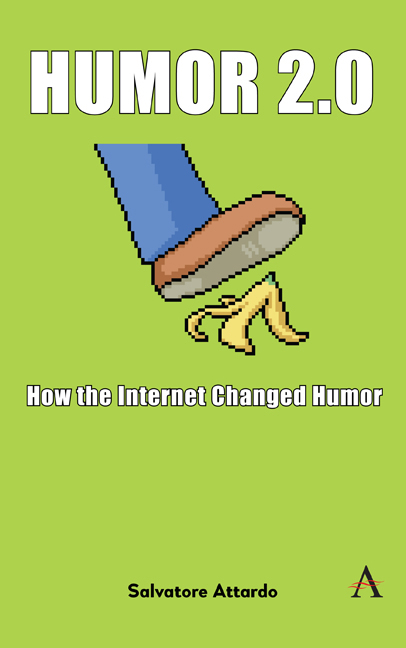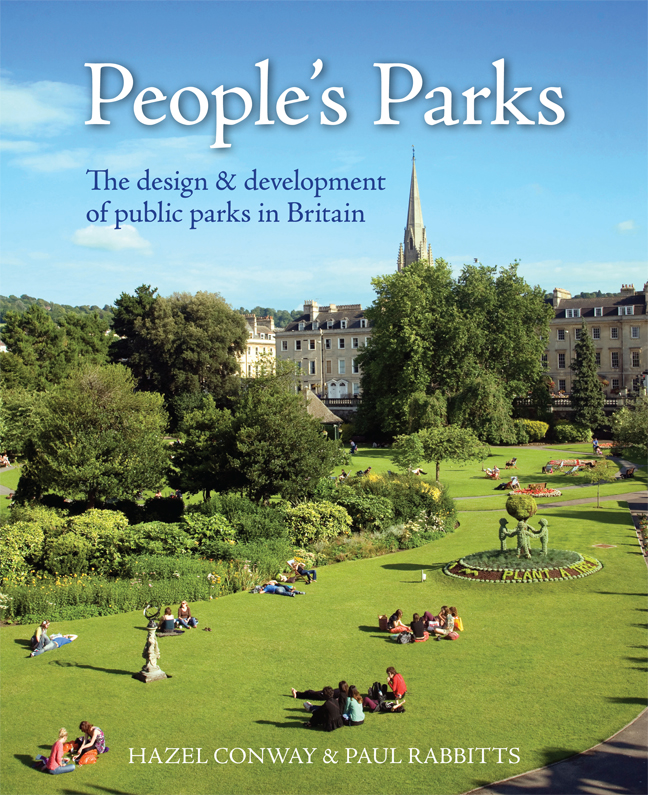Refine search
Actions for selected content:
48581 results in Computer Science
ARROW’S THEOREM, ULTRAFILTERS, AND REVERSE MATHEMATICS
- Part of
-
- Journal:
- The Review of Symbolic Logic / Volume 18 / Issue 2 / June 2025
- Published online by Cambridge University Press:
- 29 February 2024, pp. 439-462
- Print publication:
- June 2025
-
- Article
-
- You have access
- Open access
- HTML
- Export citation
Notes on contributors
-
- Book:
- Human Perception and Digital Information Technologies
- Published by:
- Bristol University Press
- Published online:
- 18 December 2024
- Print publication:
- 29 February 2024, pp ix-xii
-
- Chapter
- Export citation

Humor 2.0
- How the Internet Changed Humor
-
- Published by:
- Anthem Press
- Published online:
- 28 February 2024
- Print publication:
- 15 August 2023
Spontaneous transmedia co-location: Integration in memory
- Part of
-
- Journal:
- Memory, Mind & Media / Volume 3 / 2024
- Published online by Cambridge University Press:
- 28 February 2024, e7
-
- Article
-
- You have access
- Open access
- HTML
- Export citation
Bayesian state-space synthetic control method for deforestation baseline estimation for forest carbon credits
- Part of
-
- Journal:
- Environmental Data Science / Volume 3 / 2024
- Published online by Cambridge University Press:
- 28 February 2024, e6
-
- Article
-
- You have access
- Open access
- HTML
- Export citation
Digital remembrance: Honouring Srebrenica genocide victims via #ŠtoTeNema
- Part of
-
- Journal:
- Memory, Mind & Media / Volume 3 / 2024
- Published online by Cambridge University Press:
- 26 February 2024, e5
-
- Article
-
- You have access
- Open access
- HTML
- Export citation
Shall the robots remember? Conceptualising the role of non-human agents in digital memory communication
- Part of
-
- Journal:
- Memory, Mind & Media / Volume 3 / 2024
- Published online by Cambridge University Press:
- 26 February 2024, e6
-
- Article
-
- You have access
- Open access
- HTML
- Export citation
Motorized three-wheelers and their potential for just mobility in Caribbean urban areas
-
- Journal:
- Data & Policy / Volume 6 / 2024
- Published online by Cambridge University Press:
- 26 February 2024, e11
-
- Article
-
- You have access
- Open access
- HTML
- Export citation
A bibliometric analysis of artificial intelligence in L2 teaching and applied linguistics between 1995 and 2022
-
- Article
-
- You have access
- Open access
- HTML
- Export citation
Perceptions of learning from audiovisual input and changes in L2 viewing preferences: The roles of on-screen text and proficiency
-
- Article
-
- You have access
- Open access
- HTML
- Export citation
The multiplicities of platformed remembering
- Part of
-
- Journal:
- Memory, Mind & Media / Volume 3 / 2024
- Published online by Cambridge University Press:
- 23 February 2024, e3
-
- Article
-
- You have access
- Open access
- HTML
- Export citation
Vocabulary learning through viewing dual-subtitled videos: Immediate repetition versus spaced repetition as an enhancement strategy
-
- Article
-
- You have access
- Open access
- HTML
- Export citation
The internet will not remember you: curation of autobiographical online materials in Russia in Spring 2022
- Part of
-
- Journal:
- Memory, Mind & Media / Volume 3 / 2024
- Published online by Cambridge University Press:
- 23 February 2024, e4
-
- Article
-
- You have access
- Open access
- HTML
- Export citation

People's Parks
- The Design and Development of Public Parks in Britain
-
- Published by:
- Boydell & Brewer
- Published online:
- 22 February 2024
- Print publication:
- 14 November 2023
CONCEPTUAL DISTANCE AND ALGEBRAS OF CONCEPTS
- Part of
-
- Journal:
- The Review of Symbolic Logic / Volume 18 / Issue 1 / March 2025
- Published online by Cambridge University Press:
- 22 February 2024, pp. 300-315
- Print publication:
- March 2025
-
- Article
-
- You have access
- Open access
- HTML
- Export citation
Small subsets with large sumset: Beyond the Cauchy–Davenport bound
- Part of
-
- Journal:
- Combinatorics, Probability and Computing / Volume 33 / Issue 4 / July 2024
- Published online by Cambridge University Press:
- 21 February 2024, pp. 411-431
-
- Article
- Export citation
Design team formation using self-assessment and observer-assessment techniques: mapping practices in a global network of universities
-
- Journal:
- Design Science / Volume 10 / 2024
- Published online by Cambridge University Press:
- 21 February 2024, e7
-
- Article
-
- You have access
- Open access
- HTML
- Export citation
































